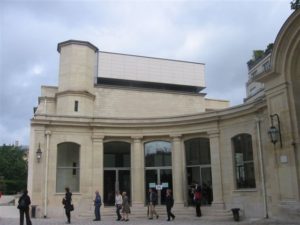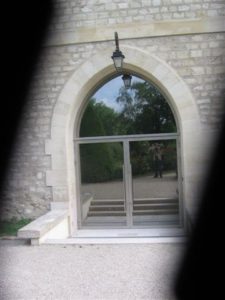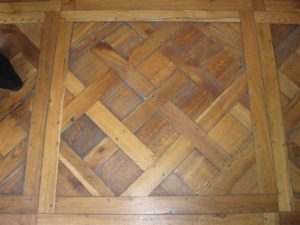___________________________________________________________________________
Note: I would like to share with you through these few words, photographs and hyperlinked websites, a 3 Dimensional experience as though you were actually there with us. To see each photograph in a very clear way as though you were with us by clicking the right side of your cursor. It should say: ‘Open in a new window’ or ‘Open image in a new tab‘. Look at the tab on the edge of the upper screen. Each photograph will come up very clear. You are an arm chair traveller with us.
If you would also like to see the post in a larger or smaller size, I suggest you follow this procedure: If you right-handed, with your left hand, press down continuously on the Control Function Key with your left hand and with your right hand, move the little cursor wheel either forwards or backward to make the text in the post larger or smaller.
____________________________________________________________________________
Auguste Rodin
François Auguste René Rodin (12 November 1840 – 17 November 1917) was a French sculptor.[1] Although Rodin is generally considered the progenitor of modern sculpture,[2] he did not set out to rebel against the past. He was schooled traditionally, took a craftsman-like approach to his work, and desired academic recognition,[3] although he was never accepted into Paris’s foremost school of art.
Rodin possessed a unique ability to model a complex, turbulent, deeply pocketed surface in clay. Many of his most notable sculptures were criticized during his lifetime. They clashed with predominant figurative sculpture traditions, in which works were decorative, formulaic, or highly thematic. Rodin’s most original work departed from traditional themes of mythology and allegory, modeled the human body with naturalism, and celebrated individual character and physicality. Rodin was sensitive to the controversy surrounding his work, but refused to change his style. Successive works brought increasing favor from the government and the artistic community.
From the unexpected naturalism of his first major figure – inspired by his 1875 trip to Italy – to the unconventional memorials whose commissions he later sought, Rodin’s reputation grew, and he became the preeminent French sculptor of his time. By 1900, he was a world-renowned artist. Wealthy private clients sought Rodin’s work after his World’s Fair exhibit, and he kept company with a variety of high-profile intellectuals and artists. His students included Antoine Bourdelle, Camille Claudel, Constantin Brâncuși, and Charles Despiau. He married his lifelong companion, Rose Beuret, in the last year of both their lives. His sculptures suffered a decline in popularity after his death in 1917, but within a few decades, his legacy solidified. Rodin remains one of the few sculptors widely known outside the visual arts community.
______________________________________________________________________________
About the Museum
The Musée Rodin (The Rodin Museum) is located in an eighteenth century mansion where the artist once lived and worked, tucked behind a walled garden away from the hubbub of the city. The building is located next to the Invalides,
the location of the tomb of Napoleon Bonaparte. The mansion was originally built for a Paris wigmaker but also belonged to the Catholic church and, eventually, the city of Paris.
______________________________________________________________________________
…. The Rodin Museum Houses Sculptures by Auguste Rodin (1840-1917) the French artist …….. see the websites:
http://www.parisdigest.com/museums/museerodin.htm.
http://www.aviewoncities.com/paris/museerodin.htm
http://www.ushistory.org/districts/parkway/rodin.htm
http://www.paris-walking-tours.com/gardenoftherodinmuseum.html
________________________________________________________________________








http://www.ibiblio.org/wm/paint/auth/rodin/
To organize, or compose, six different figures into a single unified work of art, Rodin groups them into three pairs, each pair differing from the other and yet tied to the others in rhythmic movement. The spaces between the figures are also varied. This is what sculpture tries to achieve, for sculpture deals essentially with the purposeful relationships of volumes in space. By looking at the details we see Rodin’s ability to convey feeling through facial expression and through hands. He cuts the hollows of the face deeply to assure strong shadows, and his textured surfaces catch the subtle variations of light and heighten the sense of life and movement. This irregular surface is a departure from the cold, impersonal smoothness of the classical tradition. Together with a profound sense of power and drama, it had a tremendous influence on the sculptors of Rodin’s time and helped to determine the trend of modern sculpture.
——————————————————————————–
Rodin, Auguste (1840-1917). The French artist Auguste Rodin had a profound influence on 20th-century sculpture. His works are distinguished by their stunning strength and realism. Rodin refused to ignore the negative aspects of humanity, and his works confront distress and moral weakness as well as passion and beauty.
Francois-Auguste-Rene Rodin was born on Nov. 12, 1840, in Paris. At the age of 14 he entered the Petite Ecole, a school of decorative arts in Paris. He applied three times to study at the renowned Ecole des Beaux-Arts but was rejected each time. In 1858 he began to do decorative stonework in order to make his living. Four years later the death of his sister Marie so traumatized Rodin that he entered a sacred order.
The father superior of the order recognized Rodin’s talents and encouraged him to pursue his art.
In 1864 Rodin met a seamstress named Rose Beuret. She became his life companion and was the model for many of his works. That year Rodin submitted his Man with a Broken Nose to the Paris Salon. It was rejected but later accepted under the title Portrait of a Roman. Rodin traveled in 1875 to Italy, where the works of Michelangelo made a strong impression on him. The trip inspired his sculpture The Age of Bronze, which was exhibited at the Paris Salon in 1877. It caused a scandal because the critics could not believe that Rodin had not used a casting of a live model in creating so realistic a work.
The controversy brought Rodin more fame than praise might have. In 1880 he was commissioned to create a bronze door for the future Museum of Decorative Arts. Although the work was unfinished at the time of his death, it provided the basis for some of Rodin’s most influential and powerful work. In 1884 he was commissioned to create a monument that became The Burghers of Calais. His statues St. John the Baptist Preaching, Eve, The Age of Bronze, and The Thinker are world-famous. Rodin died on Nov. 17, 1917, and was buried at Meudon.
______________________________________________________
World Art on the Internet through Artsy:
Artsy’s mission is to make all the world’s art accessible to anyone with an Internet connection.
We are a resource for art collecting and education. Artsy features the world’s leading galleries, museum collections, foundations, artist estates, art fairs, and benefit auctions, all in one place. Our growing database of 250,000 images of art, architecture, and design.
Auguste Rodin: The Centenary Installation
Marking the centenary of Auguste Rodin’s death in 1917, the Legion of Honor’s Rodin holdings will be presented in a new context. Interpretations from artists Urs Fischer, Sarah Lucas, and Gustav Klimt will be presented in the Rodin Dialogues throughout the year.
Artsy is redefining the way the world discovers art. Our mission is to make all the world’s art accessible to anyone with an Internet connection. Reaching that goal starts with our people. We dedicate an extraordinary amount of time and energy to finding world-class talent to join the Artsy Team. Want to join us? We’d love to hear from you.
See these websites:
https://www.artsy.net/artist/auguste-rodin
https://www.artsy.net/britishmuseum
From the British Museum website above, see ”Rodin: Body in Bronze” at the Brooklyn Museum:
https://www.artsy.net/show/brooklyn-museum-rodin-body-in-bronze
______________________________________________________________________________
On the left (east) side of the lawn is a small forest of linden trees. Here, in the shade, are many bronze sculptures, including “Adam”, “Eve”, “Meditation”, “The Spirit of Eternal Rest”, “Orpheus”, “The Whistler Muse”, “The Three Shades”, “The Two Caryatids” and “The Monument to the Burghers of Calais”.
There are also sculptures in the garden that Rodin had purchased, such as a headless Hercules from the Roman era. There are torsos of men and women, either from the Roman times or modern copies of Greek originals. They are placed in naturalized settings. “Nature and antiquity are the two great sources of life for an artist.” -Rodin

See the next Post:
Trip 4: FRANCE HOLIDAY in May 2007 ….. MONT-SAINT-MICHEL and its Bay + Photos …. Post 4
This post is hyperlinked even though it doesn’t look hyperlinked.
